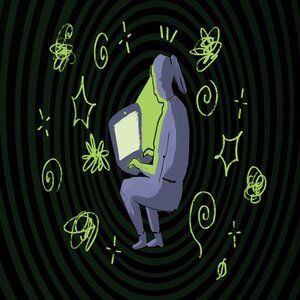How are Online Classes Affecting Student's Mental Health?
 Students had been having difficulty switching back to an offline education mode for some time, but now that the number of Covid cases is on the rise again, they are returning to the online option. Experts believe that online education can have a long-term impact on the health of students. Learning has been difficult for many remote students and only a privileged few has access to advanced gadgets and internet connectivity. The strain persists as they attempt to catch up with their curriculum while working with limited resources, resulting in substantial stress and other mental health issues.
Students had been having difficulty switching back to an offline education mode for some time, but now that the number of Covid cases is on the rise again, they are returning to the online option. Experts believe that online education can have a long-term impact on the health of students. Learning has been difficult for many remote students and only a privileged few has access to advanced gadgets and internet connectivity. The strain persists as they attempt to catch up with their curriculum while working with limited resources, resulting in substantial stress and other mental health issues.
Family conflict, social isolation, ambiguity, and a lack of a regular schedule are the main variables affecting children's mental health. What may appear insignificant to us may be the most pressing problem for youngsters, such as the inability to see their friends, the difficulties to focus in online classrooms, the impossibility to get away, and the dread of missing out.
How has the Digital Classes Concept Affected Students' Mental Health?
The students, instructors, and professors are affected by online learning, virtual classrooms may exacerbate existing mental health problems for many students. Others may experience new changes in mental health and mood as a result of the pandemic and online learning. The following are some of the ways that online learning has the greatest impact on teenagers.
1. Difficulty in Focusing –
The idea of online education was something neither of them had anticipated, and adapting to something so extreme so quickly is a major step. Although some children reacted well to it, research suggests that the majority of youngsters found it incredibly difficult to concentrate in online lessons. Because they have internet access on their gadgets, it is easier for them to become sidetracked.
2. Social Isolation –
While school is primarily a place of learning, it is also the focal point of many students’ social lives. Without frequent social interaction, kids may feel lonely, unmotivated, or frustrated as schools and universities move to virtual formats. Numerous research has demonstrated that social isolation has a higher rate of harmful effects on people's mental and physical health. Face-to-face contacts have also been shown to help alleviate depression and anxiety in other research. Social anxiety and depression may be exacerbated by a lack of social connection.
3. Lack of Creativity –
There are just not enough innovative ideas, there is hardly any engagement, and there are not many extracurricular, thus the students are feeling the curriculum is tedious and dull, making it difficult for them to be creative.
4. Virtual Learning Fatigue –
Both students and teachers can become exhausted after spending a large amount of time online. Their minds are unable to handle information in the way they are used to, which is one of the reasons why a day full of video interactions is so mentally fatiguing.
5. Anxiety and Uncertainty –
Another age group that was severely impacted was senior students who had to take board examinations or students who were going from high school to college. Due to ambiguity, perplexity, and the worry of making the wrong career choice, these folks have had to deal with a lot of stress and anxiety.
After such a lengthy period with little or no contact with individuals from the outside world, it would be a major adjustment. Parents or guardians must teach students various ways to deal with emotional difficulties. To combat the social isolation that follows, concerned should work together to make the readjustment process go smoothly, practice involvement, and engage children in collaborative activities.

.jpg)